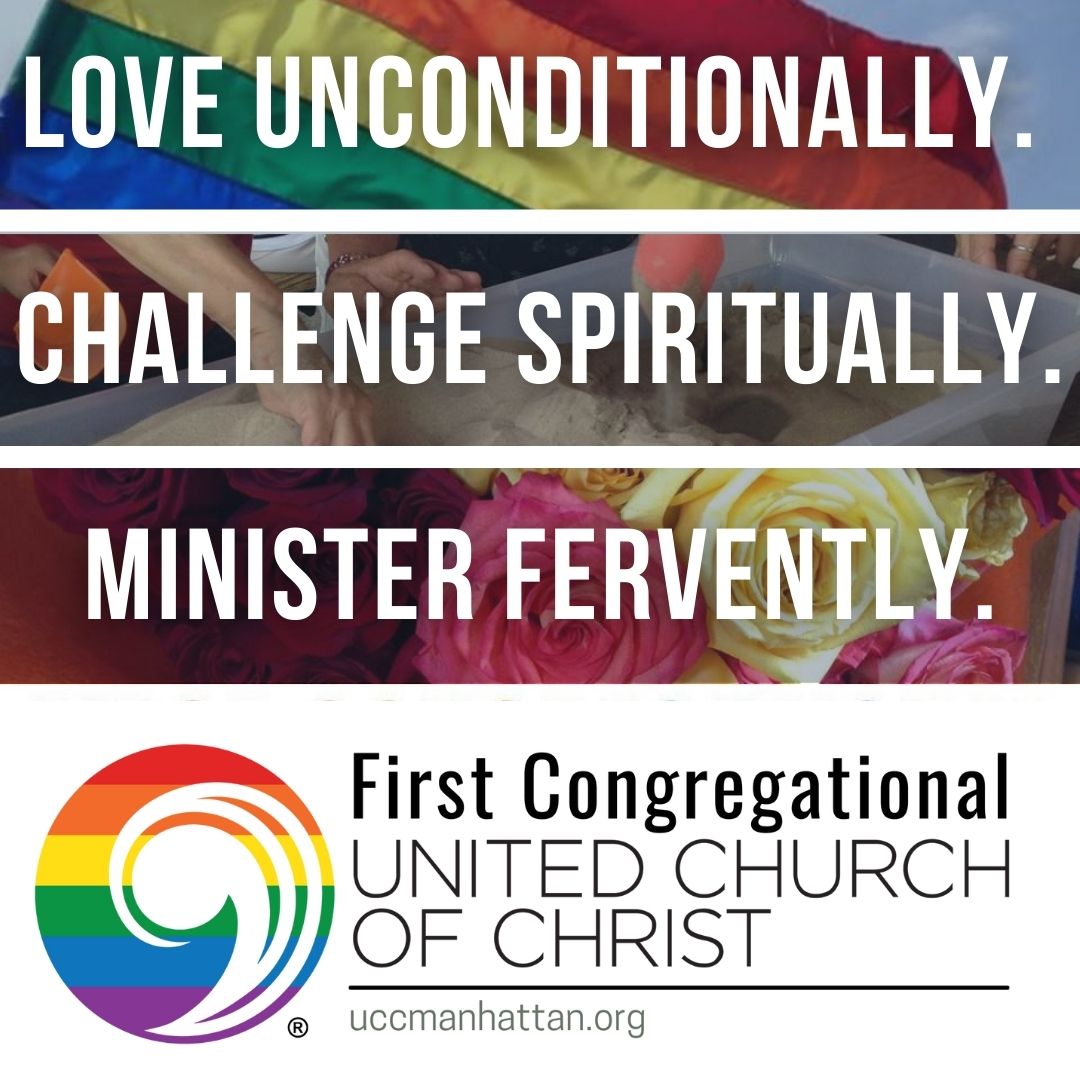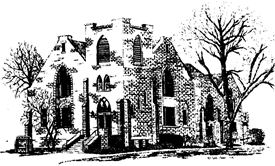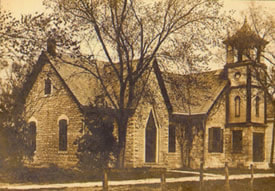Our mission in six words:
|
History of First Congregational United Church of Christ
|
Beginnings. Our building at 700 Poyntz is located on the ancestral lands of the Kanza (Kaw) and Osage nations. Kansas is currently home to four federally-recognized Native nations: the Prairie Band Potawatomi, the Kickapoo Tribe of Kansas, the Iowa Tribe of Kansas and Nebraska, and the Sac and Fox Nation of Missouri in Kansas and Nebraska.
On April 22, 1855, the Rev. Charles Blood conducted a worship service in the vicinity of our present church property. The sanctuary was a tent, a trunk served as the pulpit, and worshipers were seated on boxes and kegs. The text for the sermon was from the Acts of the Apostles: “Those who have turned the world upside down have come hither, also.” The Rev. Blood was an abolitionist preacher educated at Lane Theological Seminary, Cincinnati, Ohio, so the text was certainly appropriate. In subsequent months, services were held in the tent, then in a log cabin, in private homes, in a store building, and then in a new school building on Poyntz Avenue west of Ninth Street. Such was the beginning of the second Congregational church in the Kansas Territory. On January 6, 1856, the fledgling church was officially established by the adoption of a constitution. There were 12 charter members. Soon after, talk of a building began. The Manhattan town companies gave three lots to the church for the erection of a building along with 40 additional lots to be sold to finance the building project. In 1858, the original stone church was begun. Donors to its construction included Owen Lovejoy, Stephen A. Douglas, and Abraham Lincoln. The church was nearly finished in May of 1859 when a tornado destroyed the roof, but repairs proceeded quickly. On July 24, 1859, the building was dedicated. The Rev. Richard Cordley of Plymouth Church, Lawrence, was the guest preacher, and Mrs. Blood wrote a hymn for the occasion. The hymn was also used that same year at the laying of the cornerstone of Bluemont Central College, which was the predecessor to Kansas State University. Today. That first building still serves our congregation as Pioneer Hall. Weekly worship continues there, now in the Taizé tradition. It is the oldest Protestant church building in Kansas still in use by its original congregation. Those sturdy pioneers built well! There have been many additions to the original building over the years—notably the present Sanctuary constructed in 1904 and completely renovated in 2000, and a 1990 addition including new offices, meeting space, restrooms, kitchen, and an elevator. Our building was added to the National Register of Historic Places in 2008. Commitment to Inclusion. Our church was founded by abolitionists dedicated to the cause of Kansas becoming a free state. We often speak of how this simple fact carries within it a multitude of complexities: our faith ancestors were people who traveled here from New England to work for the freedom of enslaved people while simultaneously displacing the indigenous people who had called this place home for many generations. Like the denomination to which we belong, our local congregation has a history of civil and ecclesiastic inclusiveness. Recent manifestations of this were evident in 2000 when we called an openly gay man to be our pastor, in 2003 when we unanimously adopted our Open and Affirming Statement, and in 2014 when we enthusiastically called Caela Simmons Wood as our first female pastor. |







